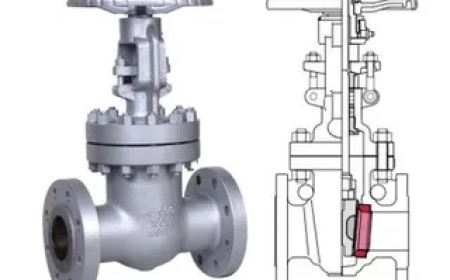Adaptive Optics Components Market Size, Share, and Forecast to 2030
The Adaptive Optics Components Market is witnessing rapid growth due to increased demand in astronomy, ophthalmology, defense, and laser communication.

The Adaptive Optics Components Market is evolving rapidly, driven by the need for high-resolution imaging in various sectors such as astronomy, healthcare, defense, and communications. Adaptive optics (AO) systems use deformable mirrors, wavefront sensors, and control algorithms to correct optical distortions in real-time, offering unprecedented clarity and precision.
What Are Adaptive Optics Components?
Adaptive optics components are used to enhance the performance of optical systems by compensating for wavefront distortions. The core components include:
Wavefront Sensors (WFS): Measure distortions in the wavefront.
Deformable Mirrors (DM): Adjust their shape to correct those distortions.
Control Systems: Process data from sensors and control the mirrors.
These components are vital for improving image quality in environments affected by turbulence or aberrationsuch as space, underwater, or biological tissue.
Key Market Drivers
1. Astronomy and Space Exploration
Astronomers have embraced adaptive optics to correct atmospheric distortions in ground-based telescopes. As global investments in large telescope projectssuch as the Extremely Large Telescope (ELT) and Thirty Meter Telescope (TMT)increase, so does the demand for adaptive optics components.
2. Ophthalmology and Retinal Imaging
In the healthcare sector, AO is being adopted to diagnose and treat eye diseases by providing clear images of retinal cells. Companies are increasingly developing compact, cost-effective AO systems for clinical use, expanding the technology beyond research labs.
3. Defense and Military Applications
The military is one of the earliest adopters of adaptive optics. These systems are used in laser weaponry, target tracking, and surveillance to overcome optical turbulence. Growing geopolitical tensions and modernization of defense systems are boosting the AO market in this segment.
4. Optical Communications
Adaptive optics play a crucial role in free-space optical communication and laser systems, helping maintain data integrity over long distances. As demand for high-speed, secure communication grows, the use of AO is expected to rise.
Market Trends
? Miniaturization and Integration
There is a growing push toward the miniaturization of adaptive optics components, enabling their integration into handheld or portable devices, particularly in medical and consumer electronics applications.
? AI-Driven Control Systems
Artificial intelligence and machine learning are being used to enhance AO performance by improving prediction and correction algorithms in real time.
? Multi-Conjugate Adaptive Optics (MCAO)
This next-generation AO system uses multiple deformable mirrors to correct distortions over a larger field of view. MCAO is gaining traction in astronomy and biomedical imaging.
Market Challenges
High Cost of Components: The precision and customization required make adaptive optics components expensive, limiting adoption in cost-sensitive markets.
Technical Complexity: Installation and calibration of AO systems require specialized knowledge, acting as a barrier for broader commercial use.
Limited Standardization: Lack of industry-wide standards complicates interoperability and mass production.
Regional Insights
? North America
Leads the global market due to significant investments in defense R&D, advanced healthcare infrastructure, and strong academic presence in astronomy.
? Europe
Home to major astronomical observatories and aerospace companies, Europe is a key player in AO adoption, especially in research-based applications.
? Asia-Pacific
The fastest-growing region, driven by increasing defense budgets, emerging space programs (India, China, Japan), and expanding healthcare access.
Competitive Landscape
Key players in the adaptive optics components market include:
Northrop Grumman Corporation
Iris AO, Inc.
Boston Micromachines Corporation
Imagine Optic
ALPAO SAS
Thorlabs, Inc.
These companies focus on innovation, mergers, and R&D partnerships to enhance their offerings and expand into new application areas.
Future Outlook
The Adaptive Optics Components Market is expected to grow significantly over the next decade. With increasing awareness and technological advancements, AO is transitioning from niche to mainstream use across multiple sectors.
? Forecast Highlights:
CAGR: Estimated growth of 812% from 2024 to 2030.
Dominant Sector: Astronomy currently, but ophthalmology is expected to surpass it due to scalable applications.
Opportunity Hotspots: AI integration, wearable imaging systems, and laser communications.
Conclusion
The adaptive optics components market is poised at the intersection of innovation and necessity. As the world moves toward sharper, faster, and more accurate imaging systems, adaptive optics will remain essential. With increased funding, broader application scope, and ongoing technological improvements, the industry is on a clear trajectory of growth.
See Detailed Insights On:-https://alignstrategicimperative.com/industry/adaptive-optics-components-market/




































